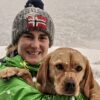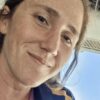CT Case 076
A 60-year-old woman presents with immediate onset of sore throat after accidentally ingesting a foreign body.
She was drinking from a glass, unbeknown to her, her 3-year-old grandchild had placed a (non-edible) object into the glass.
She appeared incredibly distressed on arrival to ED, however had normal ventilation, no voice change and no difficulty managing secretions.





Describe and interpret the CT images
Clinical Pearls
The pyriform sinus, vallecula and cervical oesophagus are the common site of foreign body impaction and perforation. Complications can include mediastinitis and sepsis which carry a high mortality rate if unrecognised.

This foreign body turned out to be a toothpick, it required removal in theatre under general anaesthetic with rigid oesophagoscopy.
The patient received broad spectrum IV antibiotics. An NGT was inserted for nasogastric feeds and were continued for 48 hours. Healing of the hypopharyngeal defect was confirmed with gastrograffin swallow.
Subsequent oral diet was recommenced and this patient was discharged home on oral antibiotics (amoxycillin/clavulanic acid).
References
- Anatomy. Thanc guide
TOP 100 CT SERIES
Dr Leon Lam FRANZCR MBBS BSci(Med). Clinical Radiologist and Senior Staff Specialist at Liverpool Hospital, Sydney
Sydney-based Emergency Physician (MBBS, FACEM) working at Liverpool Hospital. Passionate about education, trainees and travel. Special interests include radiology, orthopaedics and trauma. Creator of the Sydney Emergency XRay interpretation day (SEXI).
Provisional fellow in emergency radiology, Liverpool hospital, Sydney. Other areas of interest include paediatric and cardiac imaging.
Emergency Medicine Education Fellow at Liverpool Hospital NSW. MBBS (Hons) Monash University. Interests in indigenous health and medical education. When not in the emergency department, can most likely be found running up some mountain training for the next ultramarathon.









